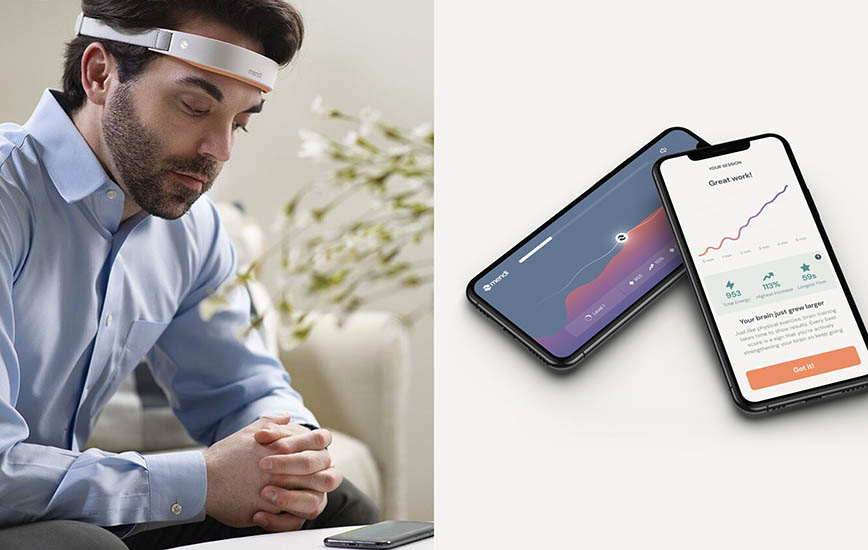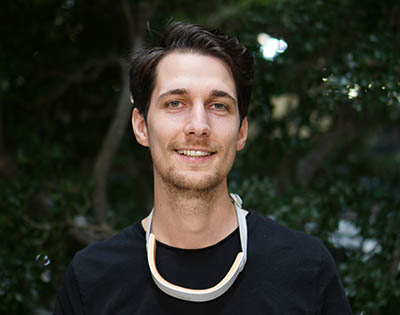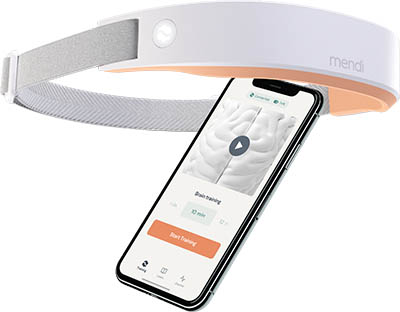Brain training is made visible through a headset

Training your brain with the aid of a headset with infrared light and an app is pure physical exercise for your brain, claims KTH alumnus Rickard Eklöf.
“Except it is a training session where you don’t end up with aching muscles – you notice your brain has been activated in other ways, such as you can find it easier to concentrate and stay in better control of your mood,” he says.
For a number of years, neurofeedback has been used by psychologists to help with patient brain training and by company executives and top athletes who want to improve their personal performance.
Now
Rickard Eklöf
, who holds a Master's degree in Electrical Engineering from KTH, wants to make this technology available to a wider audience via an innovation called
Mendi
.
How Mendi brain training works:
1. Focus training. The user focuses hard on their brain signal, that is displayed on the screen in real time. By thinking, the user increases their brain activity on the screen, and one of the tasks is to get the reading on a digital meter to rise upwards.
2. Control training. The user thinks intensively about a situation earlier in their life when they felt calm, secure and in control. The task is to stay in this positive feeling for an entire training session, that can last from 3 to 15 minutes.

“The neurons are displayed in real time during the training sessions in a 3D image that is created when different lengths of infrared light measure the blood flow and oxygenation in the brain. Activity in the frontal lobe is recorded via the headset and the user’s brain activity is then reflected via the image on a screen,” Eklöf explains.
In his experience, three separate 10-minute training sessions a week can be enough for most people to achieve the best possible results.
What is actually happening in the brain?
“This training changes various connections in the brain and strengthens them, for example, by the user focusing on staying with a certain feeling. You can see a direct link between how you feel and how your brain is performing.”
In the future, Eklöf envisages possibilities of users also being able to improve their memory, their ability to plan and their sleep with the aid of the training app.
“We have come up with ideas for around 50 possible future training areas.”

Big interest from neuroscientists
The team behind Mendi is in contact with several research groups that see big possibilities in being able to measure and compare results from tens of thousands of technology users – something that could quickly give studies statistical significance.
Users wishing to contribute to such research can choose to make their anonymised training results available to research groups via Mendi’s Open Science Framework.
“We have been in contact with neuroscientists in Germany and the USA for instance, who are keen to be involved in this potentially enormous experiment, that will naturally be based on the voluntary participation of users,” says Eklöf.
Mendi launched the headset on kickstarter in April 2020 and is about to go into production in Småland in the south of Sweden.
“All manufacturing will be in Sweden. The first hundred headbands will be sent out at the end of February, and we expect to have shipped our 9,500 headbands on pre-order in May.”
Katarina Ahlfort
Photo: Mendi

